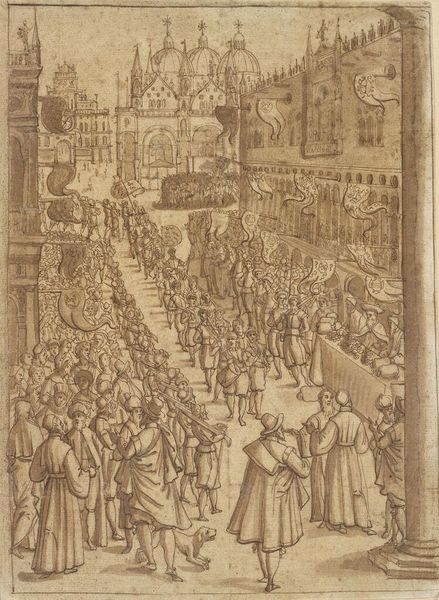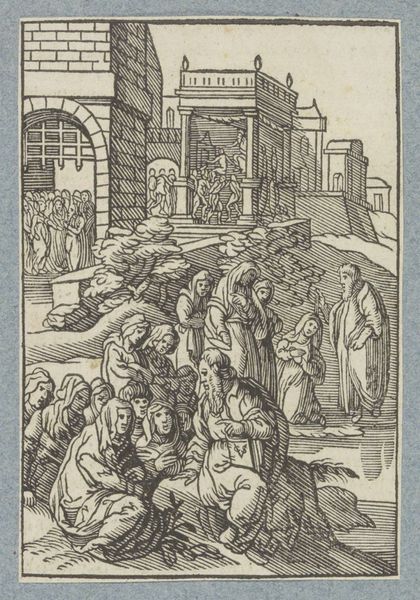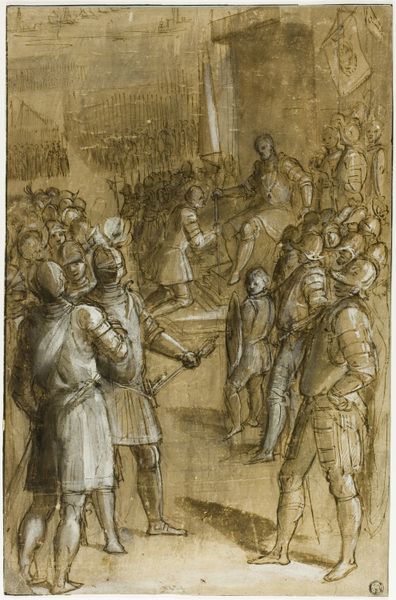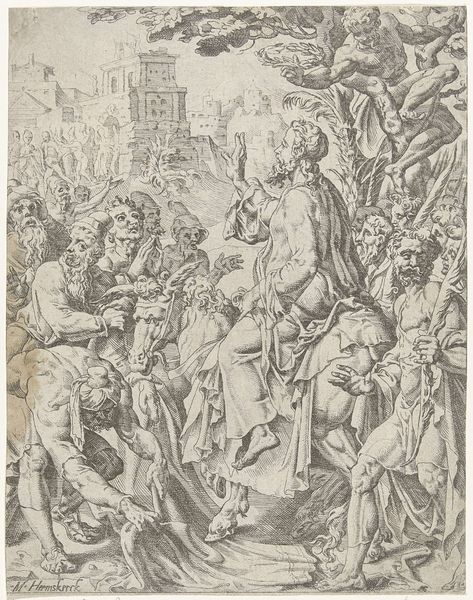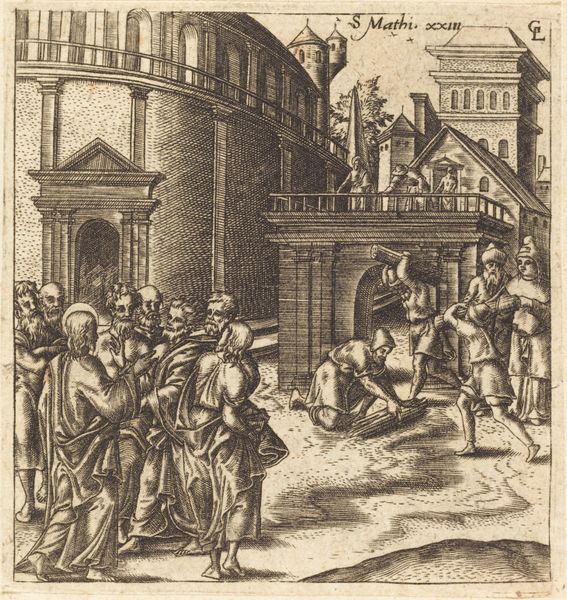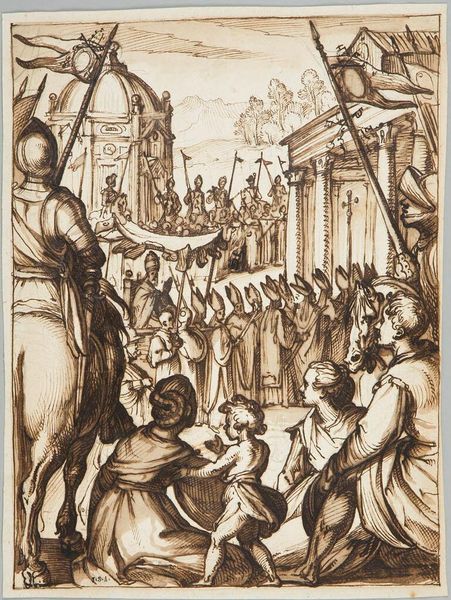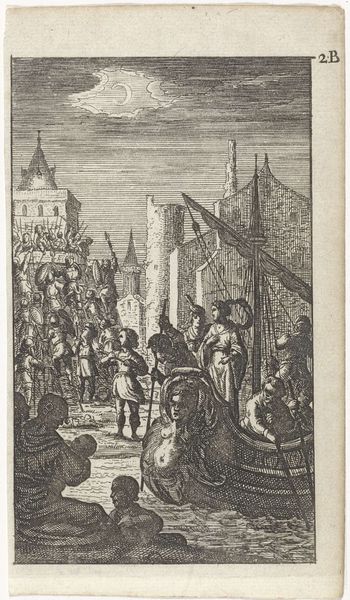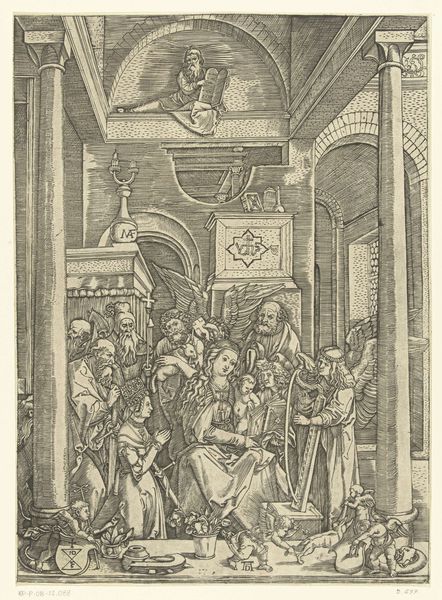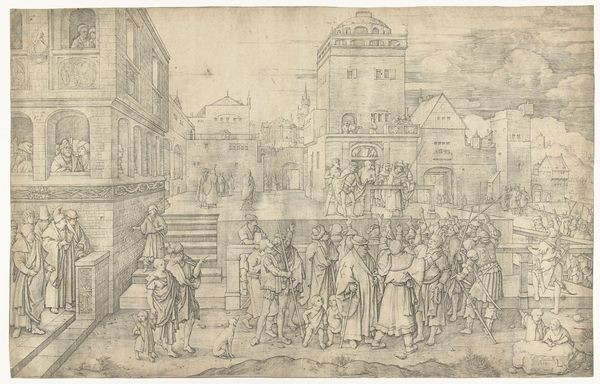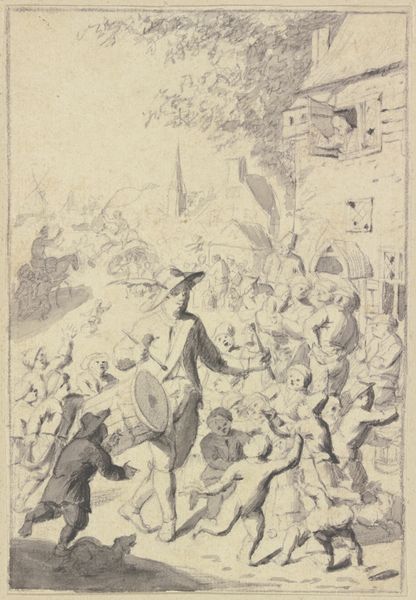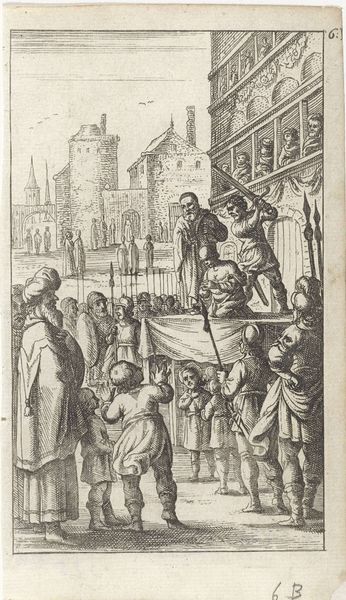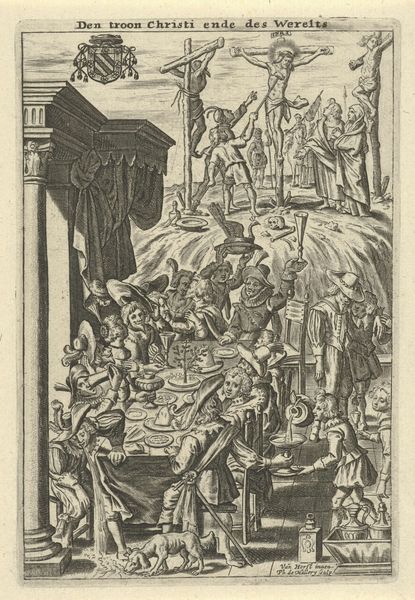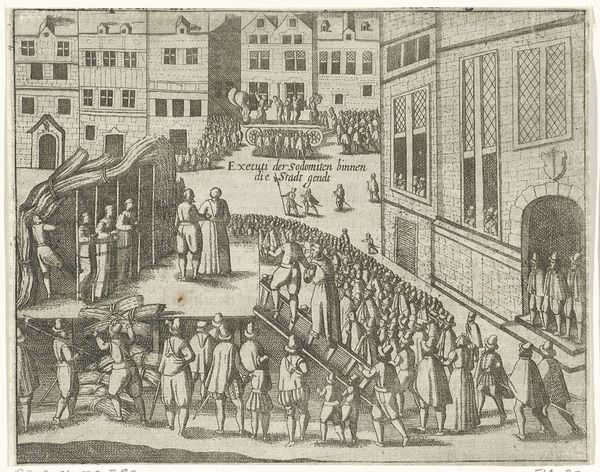
print, engraving
#
narrative-art
# print
#
pen sketch
#
figuration
#
line
#
cityscape
#
history-painting
#
italian-renaissance
#
engraving
Dimensions: height 259 mm, width 170 mm
Copyright: Rijks Museum: Open Domain
Curator: We are looking at "Optocht van soldaten voor het Dogepaleis," which translates to "Procession of Soldiers Before the Doge's Palace," by Giacomo Franco, likely created between 1560 and 1620. It is held at the Rijksmuseum, and as a print, the work allows for multiplication and broader distribution, influencing public perception. Editor: My first impression is the intense feeling of a structured but overcrowded space, that is, the spatial arrangement produces both movement and a stifling of breath with how many people are rendered. You feel like a number is what the picture wants from you; also it gives a feeling that I'm looking at an army or rather at instruments of war on parade. Curator: Indeed. Franco uses the linear quality inherent in engraving to create a sense of depth and perspective, guiding the eye from the foreground figures towards the Doge's Palace in the background. Observe the use of line weight and density; this creates tonal variation despite the print being largely monochrome. Editor: What strikes me, however, is the economic engine. The print's creation hinges on the engraver's labor, the materials involved—copper plates, ink, paper—and the socio-economic context. These processions themselves showcase civic order, and thus display an excess, which implies some form of production and profit behind its power structure. Curator: Certainly. Furthermore, the architecture itself—the Doge's Palace—serves as a powerful symbol of Venetian power, rendered with precision. The artist uses intricate details to suggest a strong government. Note the symbolism imbedded in that structure. Editor: And also remember that materials become carriers of ideology. Cheaply made prints allowed wider audiences to engage with the image of Venetian power, but did that erode or fortify faith in Doge's wealth as everyday lives for many worsened? To what end, these displays of grandeur and power in material terms, especially from that angle. Curator: Ultimately, I’m intrigued by how the structure invites a layered reflection on authority, art, and how the semiotic meaning of a thing can only reflect so much compared to how that power presents as truth-on-earth. Editor: I'm also pondering the economic conditions inherent in the object; the materials of its production offer an undercurrent that invites questions.
Comments
No comments
Be the first to comment and join the conversation on the ultimate creative platform.
